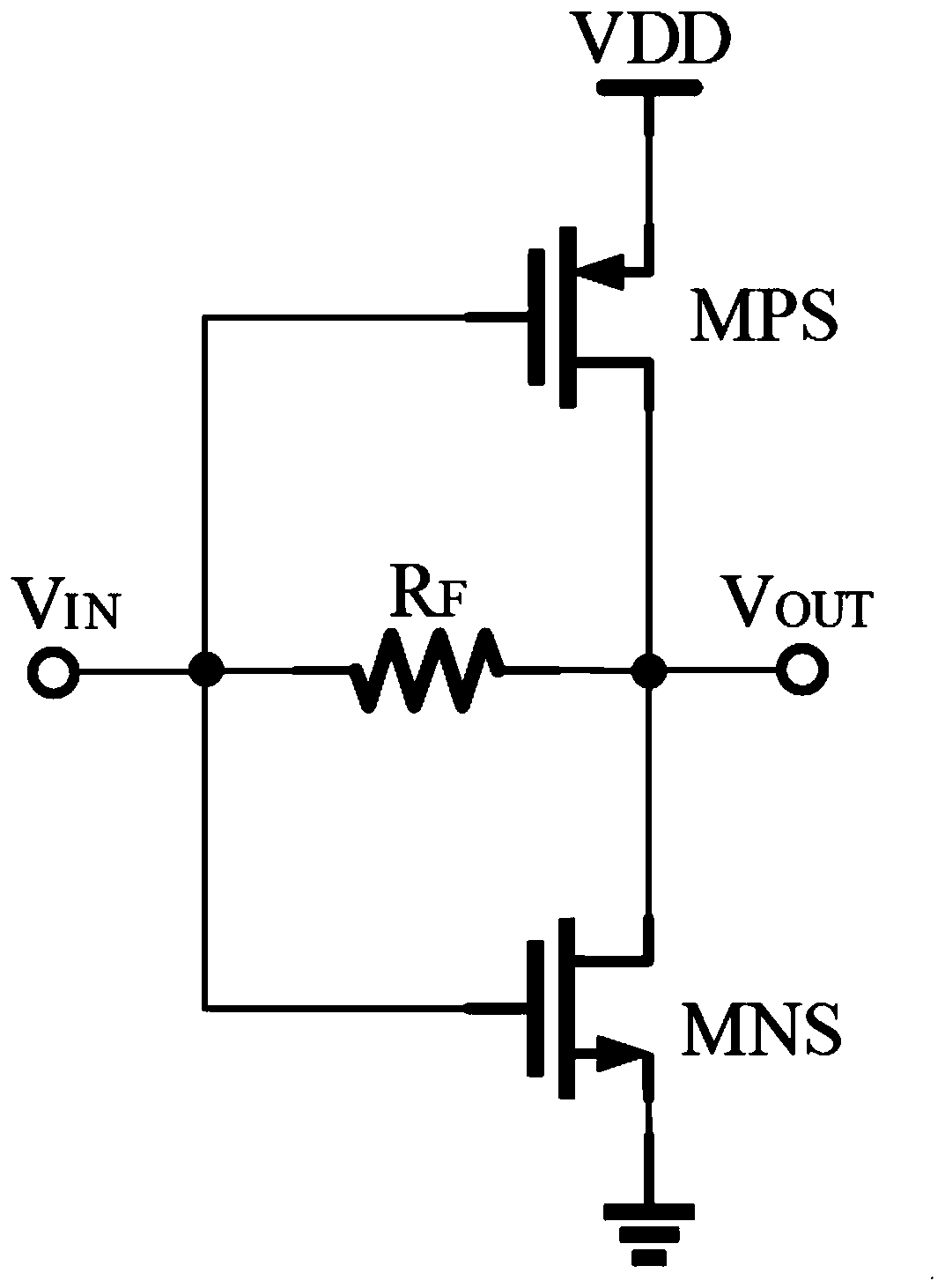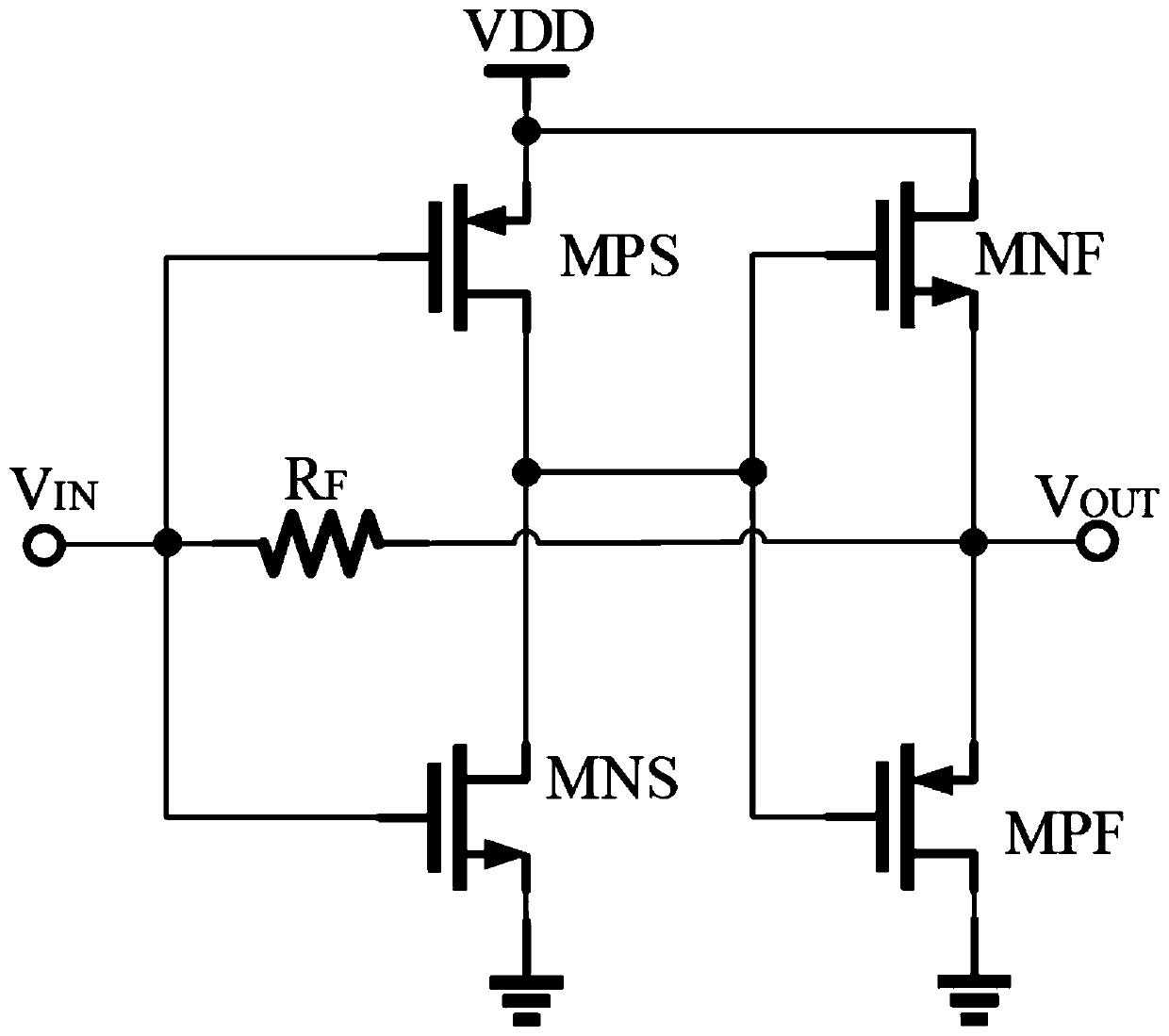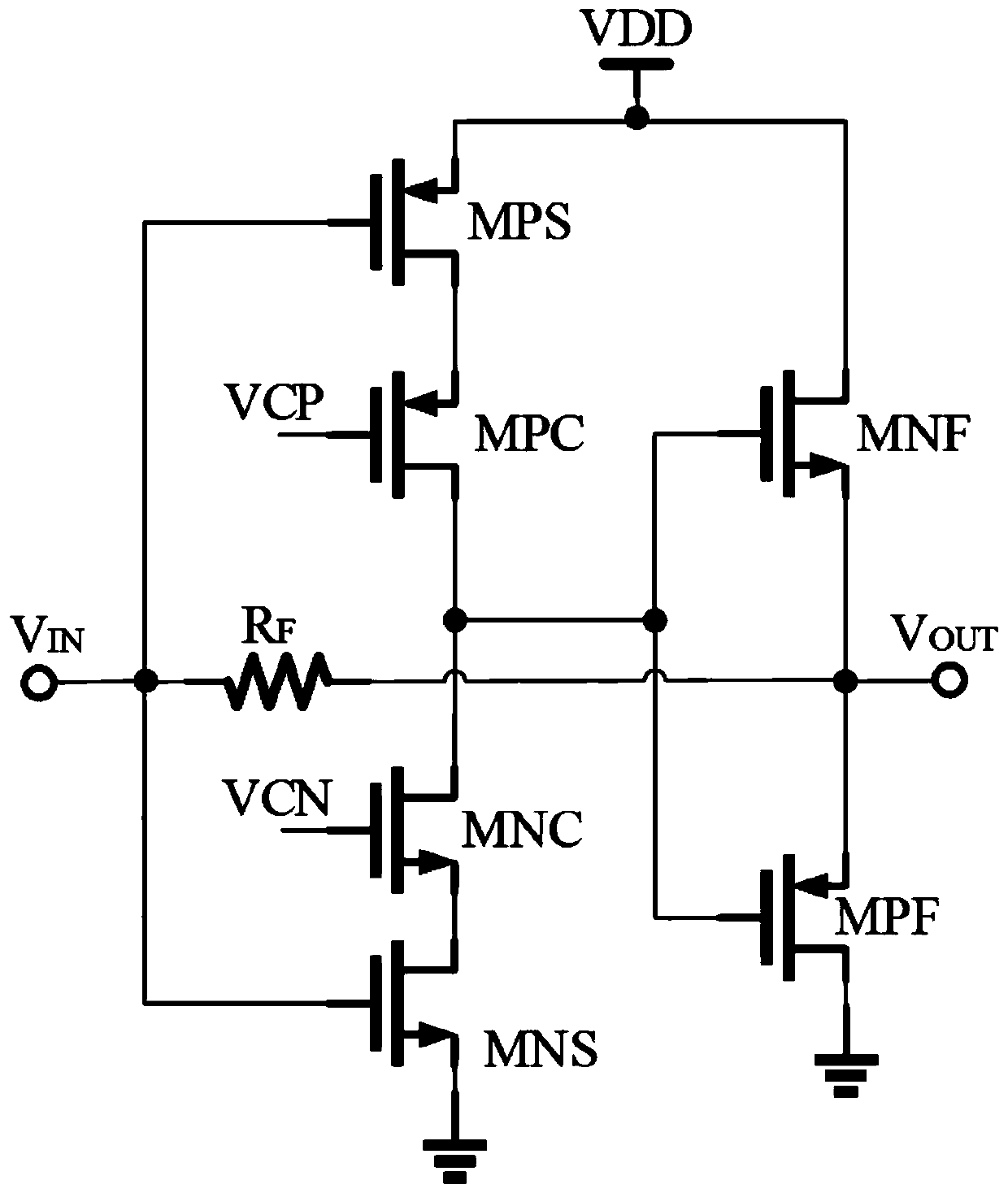Inductor-free low-noise amplifier with separated gain and impedance matching
A low-noise amplifier and impedance matching technology, which is applied to amplifiers, improved amplifiers to improve efficiency, and amplifier input/output impedance improvements. It can solve the problems of mutual limitation between impedance matching and amplification gain, and achieve improved flexibility and easy system gain. , the effect of large system gain
- Summary
- Abstract
- Description
- Claims
- Application Information
AI Technical Summary
Problems solved by technology
Method used
Image
Examples
Embodiment 1
[0042] As the first stage of the RF receiver, the low noise amplifier receives and amplifies the RF signal from the RF antenna, in order to reduce the R F simultaneous effects on gain and input impedance, this embodiment provides as figure 2 The shown two-stage circuit structure combines resistive feedback with a voltage buffer (voltage buffer) circuit, and the voltage buffer adopts a source follower circuit structure.
[0043] Such as figure 2 The circuit structure shown consists of three parts:
[0044]1. The first-stage amplifying circuit composed of a push-pull amplifier;
[0045] 2. Voltage buffer level composed of source follower;
[0046] 3. Feedback resistor R F .
[0047] The working process of this embodiment is:
[0048] The signal from the antenna of the RF receiver passes through the impedance matching network to the input terminal V of the first stage amplifier circuit IN , the first stage is used as the main gain stage, the second stage provides the vol...
Embodiment 2
[0069] Such as image 3 As shown, on the basis of Embodiment 1, the first-stage push-pull amplifier in Embodiment 2 adopts a cascode circuit structure, and the circuit performance is better improved when the circuit principle remains unchanged. .
[0070] VCN and VCP are DC bias voltages of MOS tubes MNC and MPC respectively, and MNC and MNS, MPC and MPS respectively form a cascode structure.
PUM
 Login to View More
Login to View More Abstract
Description
Claims
Application Information
 Login to View More
Login to View More - Generate Ideas
- Intellectual Property
- Life Sciences
- Materials
- Tech Scout
- Unparalleled Data Quality
- Higher Quality Content
- 60% Fewer Hallucinations
Browse by: Latest US Patents, China's latest patents, Technical Efficacy Thesaurus, Application Domain, Technology Topic, Popular Technical Reports.
© 2025 PatSnap. All rights reserved.Legal|Privacy policy|Modern Slavery Act Transparency Statement|Sitemap|About US| Contact US: help@patsnap.com



